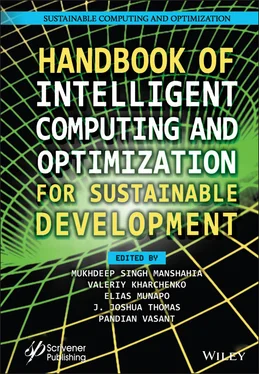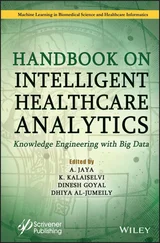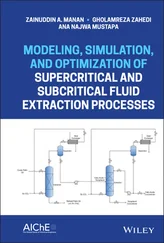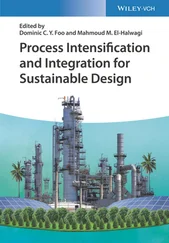Here, we discuss two case studies based on our present work. In first case, AMC using time-frequency (TF) image channelized deep convolution network. Second one discusses the CSI feedback for FDD massive MIMO systems using modified deep network called InceptNet.
5.3.1 Case Study-1: Automatic Modulation Classification
AMC acts as one of important entity in cognitive radio for spectrum monitoring and interferes mitigation of 5G wireless systems [27]. Hence, in daily life, we encounter wide variety of radio access technology (RAT) with different modulation techniques. Hence, by using DL-enabled classification would achieve high accuracy and indirectly help in increasing spectrum efficiency. Recent highly cited work by O’Shea et al . [19] has used in-phase and quadrature-phase (IQ) data as radio time series as input to the CNN and shown good classification accuracy of 10 modulation techniques. Generally real-time radio signals are non-stationary in nature. Only time domain radio image may drop some of the characteristics possessed by acquired real radio signals. There are some recent works on modulation classification that use TF feature as input to NNs for classifying wireless signal mode identification and radar signal classification [29].
Case study proposes TF channelized input to CNN, with an objective to the enhance feature dimension for CNN input. The lost information like phase or frequency variation are easily captured in energy variation of TF map. Thus, our proposed technique enhances the classification capability. In addition, work proposes a simple architecture modification called extended output classes (EOC) which is quite different from previously proposed method in [19]. The extended data set labeling on various modulation based on signal-to-noise ratio (SNR) is created, so that the trained network can approximately understand even the relative SNR of modulation.
The overall system model that can be employed in cognitive engine for radio signal monitoring and classification using ML techniques is shown in Figure 5.2. First two blocks represent the secondary user (SU) receiver that include antenna for scanning the spectrum and RF stage, that down-converts received RF signal to baseband complex signal in form I + jQ samples at some intermediate frequency. Next stage is TF analysis block which estimates joint TF energy density for the incoming complex baseband signal of some fixed sample length. Our main hypothesis for modulation classification using DL network is that preprocessing of time domain IQ samples can enhance the learning capability of CNNs and increase the classification accuracy as compared to benchmark work done in [19] which uses only time domain IQ samples as input. Hence, in this work, TF distributions are adopted for obtaining two dimensional (2D) image pattern of modulated signals, i.e., short time Fourier transform (STFT), as preprocessing unit.

Figure 5.2 Block diagram for the proposed blind identification method.
Next stage is deep NN block that takes 2D TF image as the input. In this block, we have employed widely used CNN, and it has ability to extract features from image autonomously. Exciting feature of CNN is it avoids the tedious task of manual feeding of features to classify object in hand. Thus, CNN works as feature extractor and classifier of modulated signals by taking the input as TF image of baseband IQ time samples. Since system model presented uses the TF analysis block that captures phase information, energy density information and hardware and channel impairments during trans-reception.
In this work, CNN learns modulation features and channel models from TF spectral images and intuitively able to design the matched filter (MF) for each modulation scheme and provide some filter gain at lower SNR. Thus, without the expert understanding or estimation of the underlying modulated waveform, CNN can blindly classify modulation encountered.
The last block is a baseband processing unit within the cognitive radio. This block processes the identified modulation signal to classify whether it is the primary user or secondary interfere without demodulation of the received signal. Then, it can optimize the bandwidth as per modulation types or identified radio access techniques for dynamic spectrum allocation in a next-generation wireless system.
5.3.1.2 CNN Architectures for Modulation Classification
In this case study, an eight-layer CNN for the AMC is proposed. The design draws inspiration from the visual geometry group (VGG)–CNN architecture proposed by O’Shea et al . [19, 48] for AMC. The proposed network comprises of five convolutional (Conv) layers and three fully connected (FC) dense layers including the output layer. The input size of TF spectral image is 128 × 128 that fed to the first Conv layer (Conv1) of the model. CNN has 128 filters, each of size 5 × 5. Activation function used is rectified linear unit (ReLU). To keep the output of the first layer same as the size of input image, appropriate zero padding is employed. All next Conv layers up to fourth are designed same as the first layer. The fifth Conv layer differs only with filter size, i.e., size is 7 × 7 for CNN. The sixth and seventh layers are FC dense layers, each having 256 neurons and ReLU as the activation function. The output layer is also FC dense layer with a number of neurons equal to output classes, and SoftMax as the activation function. Average pooling of stride 4 × 4 is implemented after Conv1 and Conv2 layer. A stride of 4 × 2 is carried out subsequently to Conv3 and Conv4 layers, respectively. No pooling is performed after the Conv5.
The main objective of 2D filters is to let the kernels to familiarize to I and Q data separately. Here, most of the layer’s functionality set almost same as in [19, 48]. The filter size and pooling layers are optimized for our preprocessed input unit based on the trial-and-error method. Adam optimizer used stochastic gradient instead for updating weights as similar to [48], that takes care of tuning hyperparameters like learning rate. Table 5.1represents the details about proposed CNN layout for AMC.
Table 5.1 CNN architecture layout for TF images using RML synthetic data set.
| Layer |
Output |
Parameter |
| Input |
128 × 128 × 1 |
- |
| Conv 1 (128 × 5 × 5), ReLU |
128 × 128 × 1 |
3,328 |
| Average Pooling (4 × 4) |
64 × 64 × 128 |
- |
| Conv 2 (128 × 5 × 5), ReLU |
64 × 64 × 128 |
409,728 |
| Average Pooling (4 × 4) |
32 × 32 × 128 |
- |
| Conv 3 (128 × 5 × 5), ReLU |
32 × 32 × 128 |
409,728 |
| Average Pooling (4 × 2) |
16 × 16 × 128 |
- |
| Conv 4 (128 × 5 × 5), ReLU |
16 × 16 × 128 |
409,728 |
| Average Pooling (4 × 2) |
8 × 8 × 128 |
- |
| Conv 5 (128 × 7 × 7), ReLU |
8 × 8 × 128 |
802,944 |
| FC Dense 6 (256), ReLU |
256 |
2,097,408 |
| FC Dense 7 (256), ReLU |
256 |
65,792 |
| FC Dense 8 (90), Softmax |
90 |
23,130 |
The notion of EOCs is motivated from transfer learning in which novel labeling technique is adopted for the estimated output type. Individual sample in the training data set is labeled with two labels, i.e., the modulation and received SNR label, respectively. In AMC, using CNN common approach is to use only modulation class label. By using “EOC” method, the CNN is trained to estimate both the modulation label as well as the SNR label of the input sample. It is carried out by describing output classes with [Modulation, SNR] labels rather than just [Modulation] labels. Our data contains ten modulation types; hence there will be 90 output classes. As shown in Table 5.1in the last FC dense layer consists of 90 neurons.
Читать дальше













